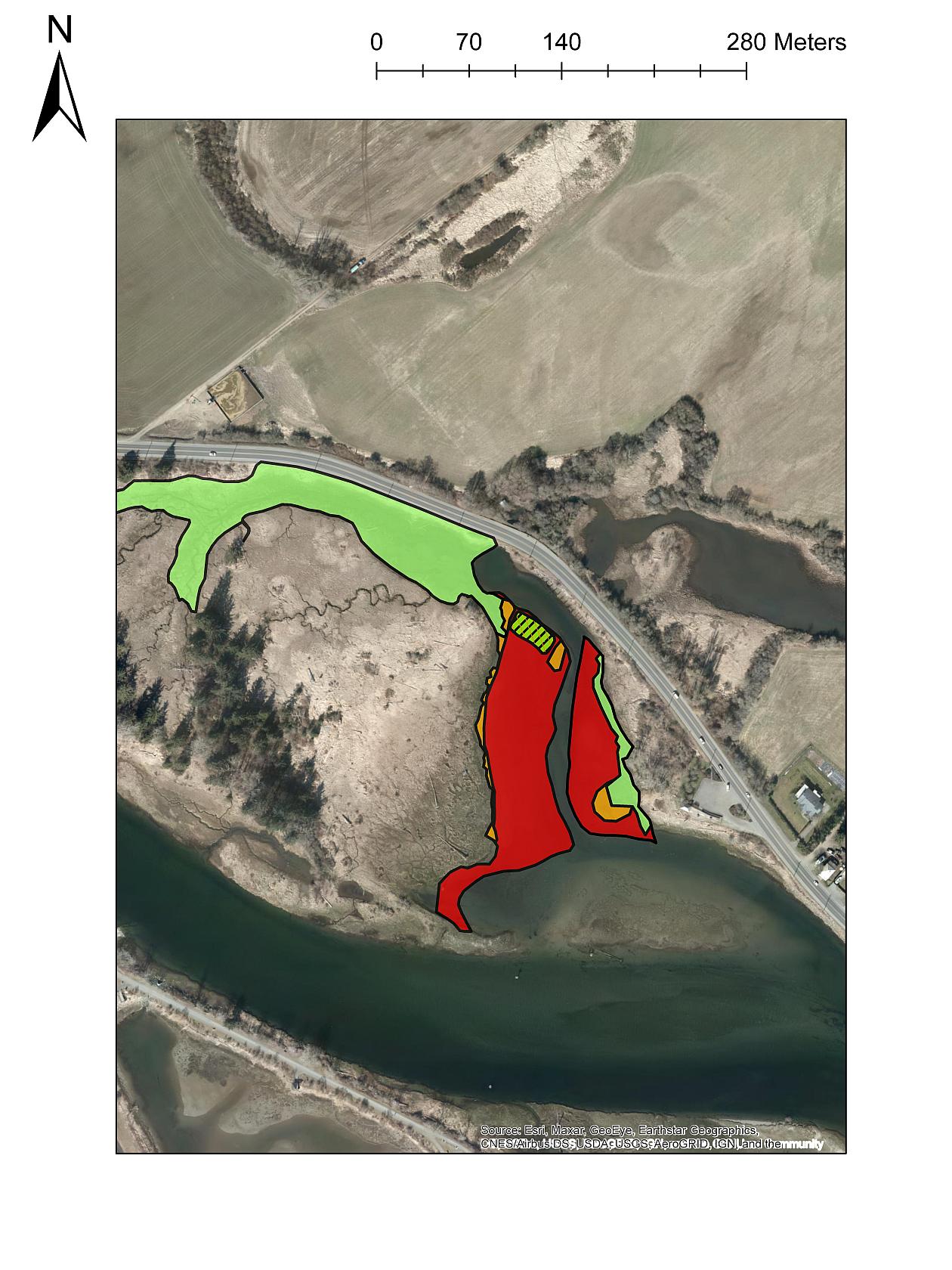Salt Marsh Restoration in the K’ómoks Estuary at Dyke Slough
A tidal marsh is a type of habitat found along coasts and estuaries which is regularly flooded by the tides. The vegetation found in these areas has evolved adaptations to this inundation by marine waters. These marshes are among the most productive ecosystems in our region, with a number of species including waterfowl, other migratory birds, and salmonids using these marshes as habitat. They are home to stunning plant biodiversity and have been important sites of cultivation and harvest of staple food plants, such as silverweed (Potentilla egedii), Camas (Camassia spp.) and Northern riceroot (Fritillaria camschatcensis) for Coast Salish peoples.
Human influences have led to loss of marsh in the estuary. Some anthropogenic influences include climate change, increased storm frequency and intensity, and grazing from resident Canada Geese populations.
The map on this page shows lost, historic salt marsh in red, degraded salt marsh in orange, and intact salt marsh in light green. The area in green with hash marks shows a marsh restoration project under-taken in March of 2021 by Project Watershed, funded by Fisheries and Oceans Canada through the Coastal Restoration Fund.
This restoration built up a new marsh platform to replace lost, historic tidal marsh. The newly built platform (bottom photo) was then planted, all to help support wildlife and coastal resiliency in our thriving estuary.

Related Posts
Eelgrass Update
In the fall our restoration team surveyed the three eelgrass beds which were planted with the help of our volunteers back in June. The beds are looking healthy!
Kus-kus-sum: End of Season Wrap-up
Now that we have put the Kus-kus-sum site to bed for the winter, we wanted to give you all a little update on how things progressed this season – lots happened!
Kate McKeown
Meet our new Forage Fish Technician!
Greenshores at Dyke Road Park – Reimagining a Park
On September 20 and 21, over 20 people were on site to help with planting at the Comox Valley Regional District’s (CVRD) Dyke Road Park redevelopment project.
Gartley Beach Green Shores for Homes Project
Project Watershed is teaming up with the CVRD and the Stewardship Centre for BC to do some shoreline restoration at Gartley Beach in Royston.
Fall and Winter Forage Fish Sampling
We’re gearing up for the fall/winter season of forage fish sampling!








